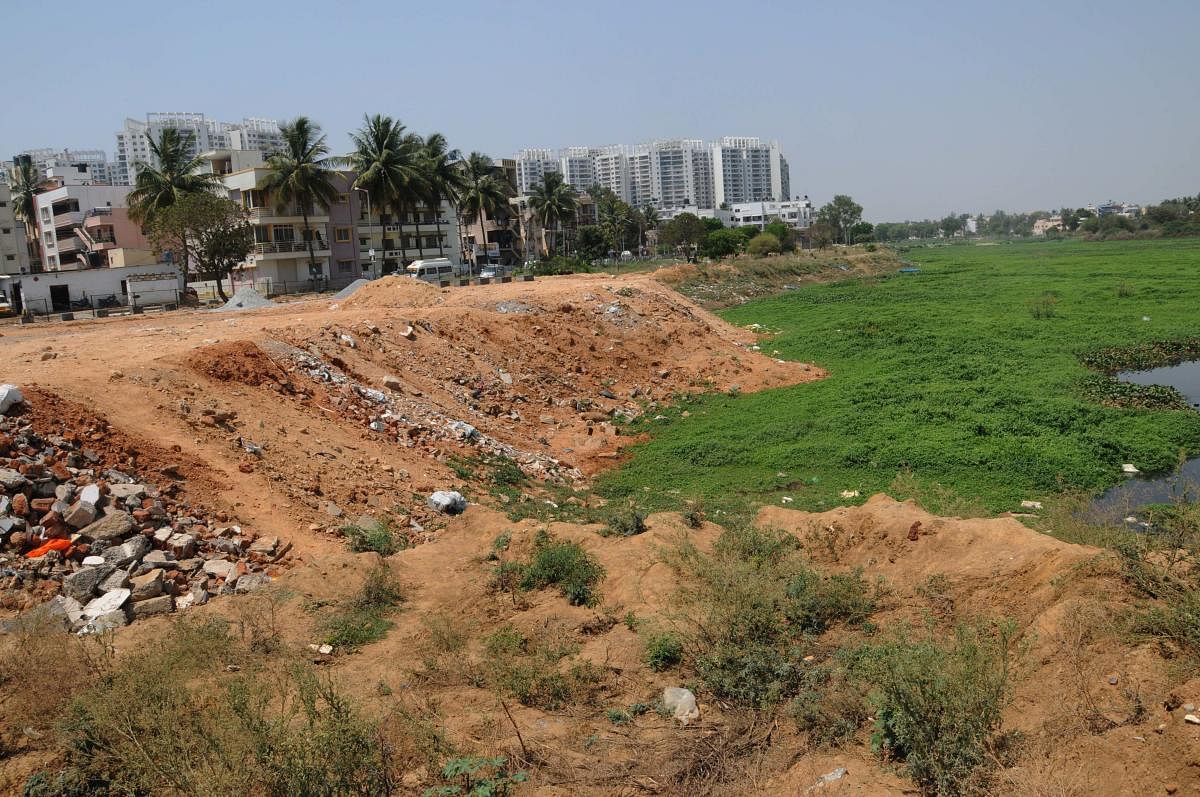
The world sat up and took notice. It had to, when the unimaginably polluted Bengaluru lakes frothed in tandem, spewed out smoke and dramatically caught fire. But did everyone get the message that the lakes were sending in despair: That the unregulated encroachment of lake beds merited their highest attention?
Today, the ‘official’ response is caught up in a numbers game between the National Greens Tribunal (NGT) and the state government. The Tribunal earmarked a buffer zone of 75 metres around lakes and storm water drains, directing that no construction be allowed there.
The government contends that there are an existing 31,500 buildings in the increased buffer zone of lakes and another 19.4 lakh buildings in the increased buffer zone of storm water drains.
Occupancy certificates
Part of this are about 4,000 apartment units, constructed by builders who have obtained plan sanction, building plan approval and other key documents by the Bruhath Bengaluru Mahanagara Palike (BBMP). But the Palike cannot issue occupancy certificate (OC) to them due to the NGT’s 75-metre rule.
So, why did the Palike issue the documents in the first place? The civic agency claims it stopped approving building plans after NGT’s ruling in May, 2016. But many builders who had obtained the approvals before the new rule had not reckoned the buffer zone around the storm water drains.
The Tribunal has ruled against buildings within 50 metres, 35 metres and 25 metres of the edge of the primary, secondary and tertiary drains. Countering this, the State told the Supreme Court that if these 2016 directions were implemented, 95% of the buildings in Bengaluru will have to be demolished.
Shifting focus?
But in the midst of these legal wrangles, has the focus shifted from the original intent of rescuing the city’s lakes from their current state of extreme despair?
Whatever the arguments and whoever wins it, the spotlight refuses to move away from the Varthur and Bellandur lakes in East Bengaluru. Bellandur lake alone receives almost 40% of the city’s untreated sewage. Most of this reaches the Varthur lake, downstream.
The original buffer zone limit of 30 metres was breached at several spots around this lake years ago.
For instance, thousands of tons of construction debris were dumped openly in the buffer zone to the East of the Bellandur lake road linking Yemalur to Bellandur village. No one stopped the trucks. Nor did any official halt the solid waste dumped all along the lake’s Northern periphery.
At Bellandur Ammanikere, part of the canal that links Bellandur lake with Varthur lake, the water body has been narrowed down to a mini stream. Scientists, activists and affected local residents have questioned the virtual strangulation of the feeder canal to Varthur lake. The buffer zone has been completely vandalized here.
Official encroachments
The encroachment here has an official stamp. Right inside the earlier 30-metre buffer zone, the Minor Irrigation Department laid pipelines to take treated water to Kolar lakes as part of the Koramangala-Challaghatta Valley project.
The green buffer zone was filled up with tons of construction debris to lay a road that led the trucks in. In the process, the canal was narrowed further.
Residents in the vicinity complain that the Department did nothing to restore the dug up portion of the lake once the pipelines were laid. Says Jagadish Reddy, a warden of Varthur lake: “A part of the lake bed that is filled with excess soil and debris in violation of NGT directives is yet be cleared.”
The road too has not been altered. “Several Public Interest Litigations and judicial directions concerning conservation of lakes have been filed in the last 18 years before the NGT and the Karnataka High Court.”
“There are standing Court directions on survey of lake areas and removal of encroachments, stoppage of sewage entry into lakes, and non-diversion of lake area for any other purpose,” Reddy notes.
The much-hyped demolition drive against encroachments of lakes and storm water drains across the city is now history.
The legal tussle over the buffer zone area is likely to delay any further movement on the drive.
On its part, the BDA maintains that it has kept a check on encroachments and is in the process of removing them one by one, particularly in the Varthur and Bellandur lake premises.
On the government’s move to reduce the NGT-fixed buffer zone limit, Dr T V Ramachandra from the Indian Institute of Science (IISc) sees it as an attempt to dilute the lake conservation efforts. “By diluting the buffer zone, the agenda is to kill the water bodies,” he notes.
Critical flood plains
For any water body to survive, the flood plain is extremely critical. “The flood plain helps in retaining the water in the region. When water flows towards the lake, the roots of the shrubs and other plants in the buffer zone takes the Nitrates and Phosphates and treats the water naturally. There is a scientific basis,” explains Dr Ramachandra.
Riparian vegetation in the buffer zone, he elaborates, helps in the percolation of water as well as remediation. “Hence the integrity of buffer zone should not be reduced. A 75-metre buffer is the norm for smaller water bodies with spatial extent of 125-150 acres.”
Flood plains (buffer zones) should not be tampered with as they are scientifically identified based on the contours (elevation), lake size and catchment shape and size.
Occupying these plains will only enhance the flooding instances. These regions, he warns, will become vulnerable to frequent floods, loss of life and property.